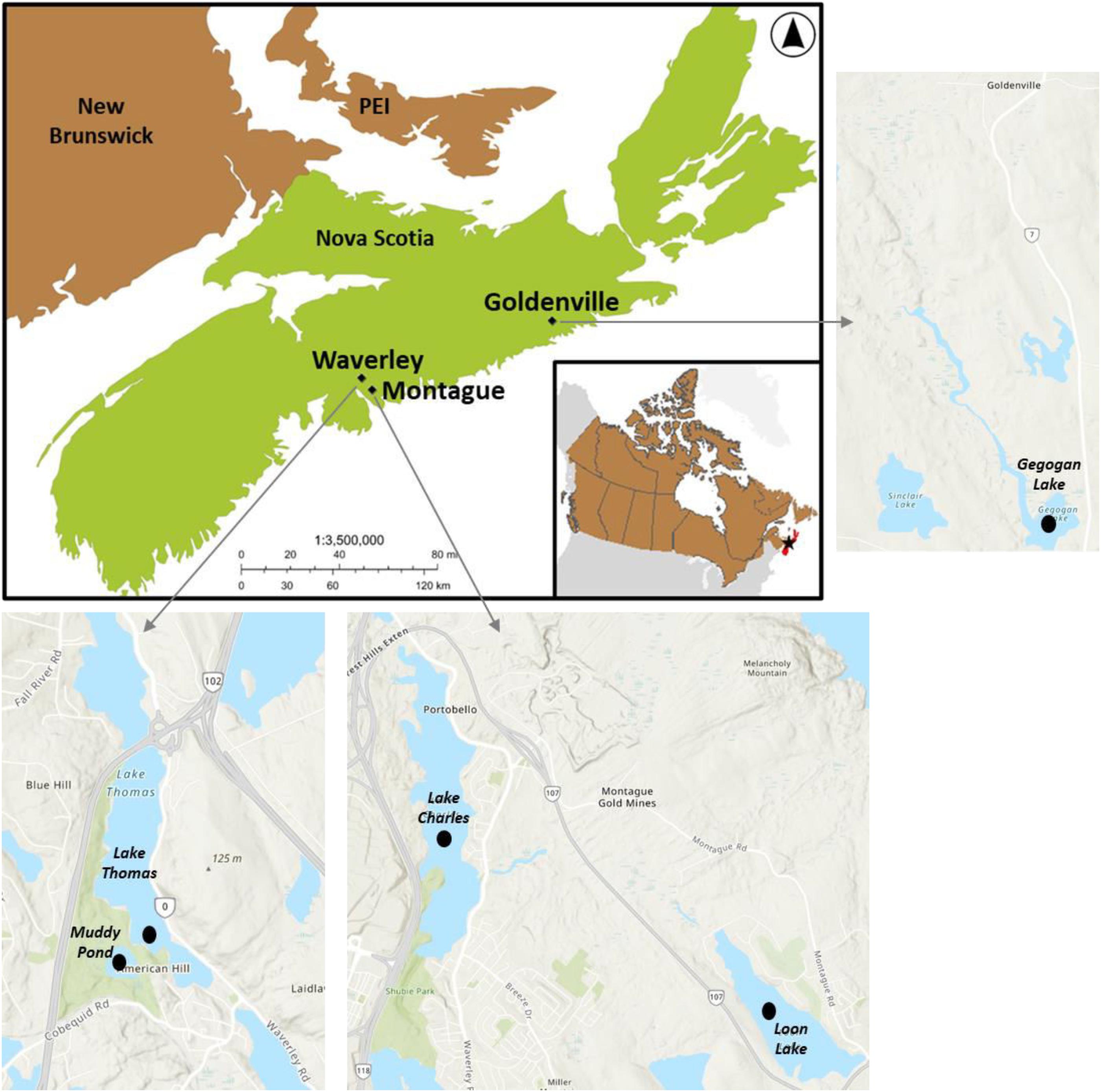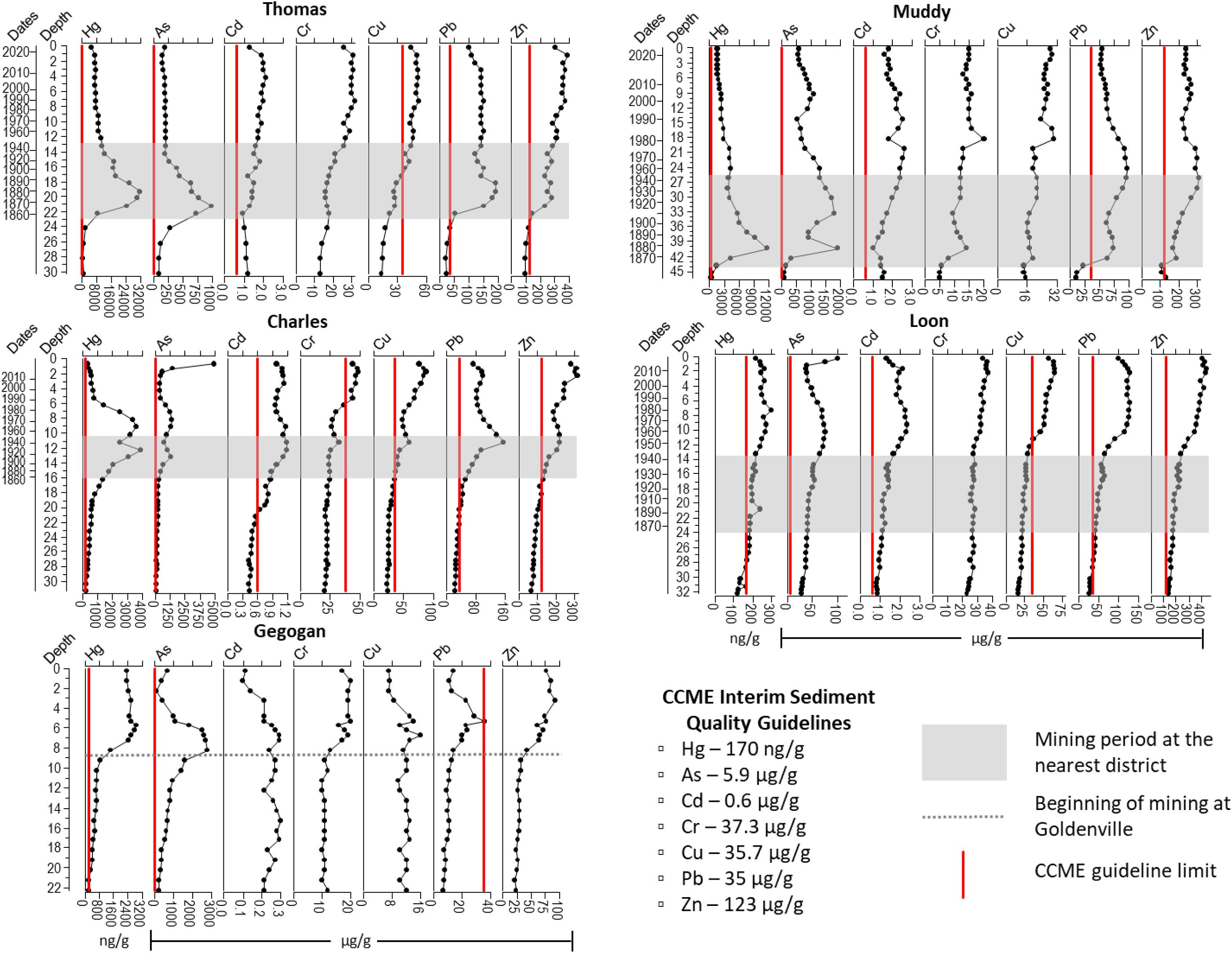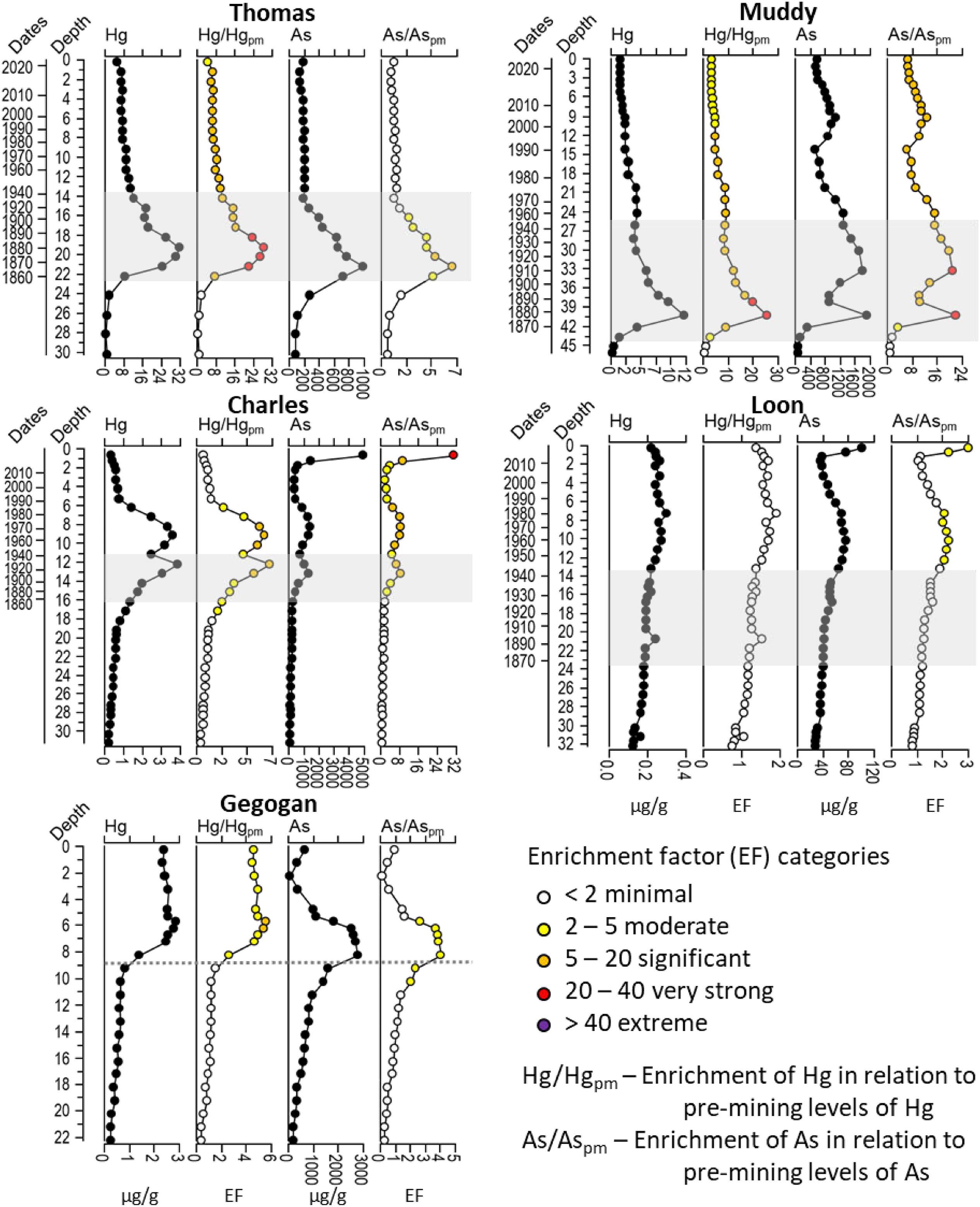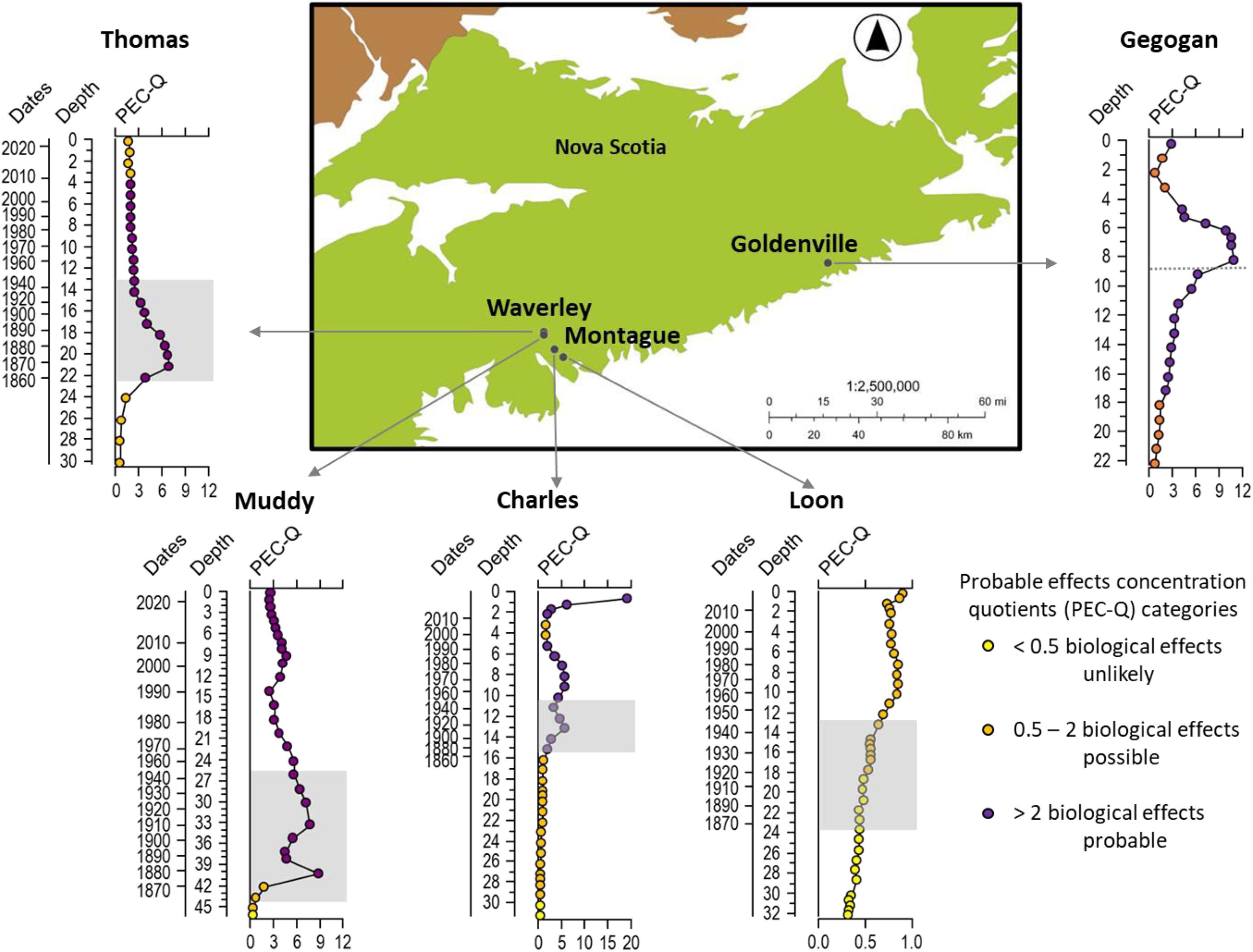Historical gold mining increased metal(loid) concentrations in lake sediments from Nova Scotia, Canada
Abstract
Introduction
Methods and materials
Study region and lakes

| Lake | Gegogan | Thomas | Muddy | Charles | Loon |
|---|---|---|---|---|---|
| Latitude (decimal degrees) | 45.0783 | 44.792 | 44.788 | 44.715 | 44.703 |
| Longitude (decimal degrees) | −62.0045 | −63.607 | −63.611 | −63.548 | −63.507 |
| Maximum depth (m) | 2.2 | 17 | 3.5 | 28.1 | 6.6 |
| Surface area (km2) | 0.21 | 1.12 | 0.1 | 1.35 | 0.75 |
| Sampling date | April 2022 | November 2021 | November 2021 | May 2019 | May 2019 |
| Sediment coring depth (m) | 2.0 | 16.7 | 3.3 | 28.1 | 6.6 |
Field work
Radiometric dating
Metal(loid) analysis
Data analysis

Results
Radiometric dating
Trends in sedimentary metal(loid) concentrations
CCME Interim Sediment Quality Guidelines (ISQGs)
Sedimentary arsenic and mercury enrichment factors

Probable effects concentration quotients (PEC-Q)

Discussion
Sedimentary As and Hg contamination due to historical gold mining and mineral processing
Sediment quality guidelines and paleotoxicity in mine-impacted lakes
Implications for ecosystem recovery and aquatic biota
Acknowledgements
References
Supplementary material
- Download
- 63.80 KB
- Download
- 227.62 KB
Information & Authors
Information
Published In

History
Copyright
Data Availability Statement
Key Words
Sections
Subjects
Plain Language Summary
Authors
Author Contributions
Competing Interests
Funding Information
Metrics & Citations
Metrics
Other Metrics
Citations
Cite As
Export Citations
If you have the appropriate software installed, you can download article citation data to the citation manager of your choice. Simply select your manager software from the list below and click Download.
There are no citations for this item
